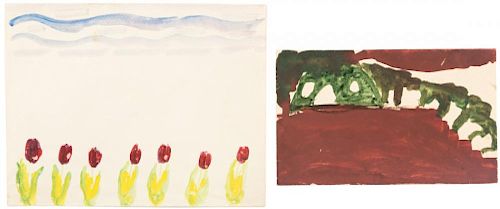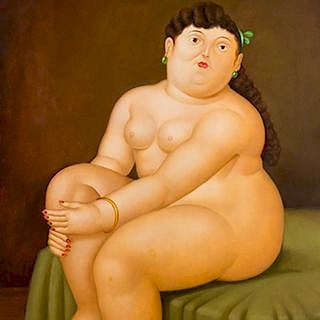A PAIR OF FUTURISTIC COMPOSITIONS BY ELENA GURO (RUSSIAN 1877-1913)
Lot 181
About Seller
Shapiro Auctions
566 East Boston Post Road
Mamaroneck, NY 10543
United States
Our auctions feature an impressive selection of fine art, decorative art, rare books, icons, militaria, and other objects from antiquity to the present. Shapiro Auctions advertises globally and has clients all over the world, while providing a rare combination of personal service and the ability to ...Read more
Categories
Estimate:
$600 - $800
Absentee vs Live bid
Two ways to bid:
- Leave a max absentee bid and the platform will bid on your behalf up to your maximum bid during the live auction.
- Bid live during the auction and your bids will be submitted real-time to the auctioneer.
Bid Increments
| Price | Bid Increment |
|---|---|
| $0 | $25 |
| $500 | $50 |
| $1,000 | $100 |
| $2,000 | $250 |
| $5,000 | $500 |
| $10,000 | $1,000 |
| $20,000 | $2,500 |
| $50,000 | $5,000 |
| $100,000 | $10,000 |
| $200,000 | $25,000 |
About Auction
By Shapiro Auctions
Sep 17, 2016 - Sep 18, 2016
Set Reminder
2016-09-17 10:00:00
2016-09-18 10:00:00
America/New_York
Bidsquare
Bidsquare : Important Fine & Decorative Art Auction
https://www.bidsquare.com/auctions/shapiro/important-fine-decorative-art-auction-1714
Shapiro Auctions info@shapiroauctions.com
Shapiro Auctions info@shapiroauctions.com
- Lot Description
A PAIR OF FUTURISTIC COMPOSITIONS BY ELENA GURO (RUSSIAN 1877-1913)
,
comprising:
a) Futurist Composition, circa 1910, watercolor and gouache on paper (envelope), 11 x 14.5 cm (4 3/8 x 5 5/8 in.)
b) Futurist Composition , circa 1910, watercolor and gouache on paper (envelope), 7.5 x 11.5 cm (3 x 4 1/2 in.)
LOT NOTES
Elena Genrikhovna Guro (1877-1913) was a Russian Futurist painter, playwright, poet, and writer of fiction. From 1890 to 1893 she studied art at the Society for the Encouragement of the Arts in St Petersburg. From 1903 to 1905 she studied in the private studio of Jan Ciaglinski where she met her future husband Mikhail Matyushin. In 1905 she illustrated the Russian translation of a book of fairy tales by George Sand. In 1906 she and Matyushin moved to the school of Elizaveta Zvantseva, where Guro worked under Mstislav Dobuzhinsky, Leon Bakst and Kuzma Petrov-Vodkin. In 1908 she left the school and established her own studio. By 1908 her home was a central meeting place for discussions on art and literature. In 1913 she continued to write and paint, even though she was suffering from leukemia. She died the same year at her country house in Polyany, Leningrad Oblast, formerly Uusikirkko, Finland. In Russia, Guro was one of the first artists who took interest in what was called the fourth dimension. Guro`s pantheistic formulation of man`s identity as a creature including a merging with cosmos, was a combination of German idealism with ideas on the fourth dimension as "hyperspace" (and not as time). Many artists believed in the existence of another reality beyond the one we normally see, and that it was the task of the artist to show the way into this higher reality by making it visible for philosophers and scientists.
THIS LOT IS BEING SOLD WITHOUT RESERVE. - Shipping Info
-
- Buyer's Premium



 EUR
EUR CAD
CAD AUD
AUD GBP
GBP MXN
MXN HKD
HKD CNY
CNY MYR
MYR SEK
SEK SGD
SGD CHF
CHF THB
THB














